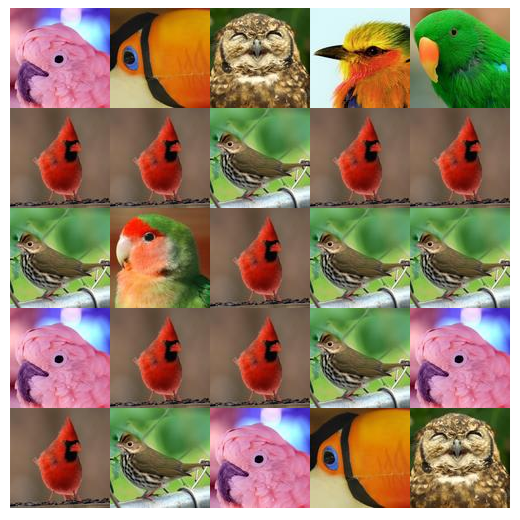Continuous Carousel Driven by jQuery UI

I bet that as a child you liked to ride on a carousel (or a roundabout). I hated it, the motion sickness got me good! Anyway now as adults (or generally web developers) we can go back in time and also ride on some other kind of carousel. But this time a non-sicky JavaScript one. Probably all of you have heard about this kind of a widget before, there are lots of similar ones already written jQuery.
OK. Without further ado, I would like to introduce you rcarousel – a jQuery UI continuous carousel. It happens that, 2 days ago I released a new version – version 1.1. Let me talk about it. rcarousel is a jQuery UI widget. Just because of it, it shares all of its capabilities: custom events, nice API, etc. As of version 1.1, rcarousel is really simple to use. Just throw in some content (yeah, from now on, it supports any HTML content, not only images) into a container, e.g. a DIV and install the widget upon it. That’s it!
It is highly customizable. Just take a look at this example: (Broken Link)
But it does not have to look so complicated. You can run it with the Auto mode – without navigation. I think that the feature many of you may like is multi carousels on a page. There is no problem with having many of them in a one page.

Custom number of visible elements and a step (number of elements to scroll by) allows you to tailor it to your needs. Another nice feature is loading elements on demand (at the run-time) via API. With little effort you can fetch XML, JSON, parse them and then add elements with ‘append’ method.
To keep this guest post (thanks!) short, let me outline other features:
• many options to choose from
• images (and any elements) with links
• vertical carousels
and much more!
When it comes to browser compatibility, rcarousel supports many of them. But if you are looking for 11-year browser support, then this carousel is not for you. Otherwise read on.
So, rcarousel was tested successfully in the following browsers:
• Internet Explorer 7+
• Firefox 3.0+
• Chrome
• Opera 10.10+
• Safari 4.0.5+
To recap. I write and maintain rcarousel in my spare time. I did my best to share with community all the best I learned. I did not write it for myself. No. I like this community, open source and sharing knowledge. I am open to patches, ideas, good words. If you could, please donate some bucks (your $5 is much worth in Poland than USA/foreign countries) to me. Unemployment is not an easy period in life (crisis sucks)!
PS – If you use a lightbox widget in your pages, consider using rlightbox2 – a jQuery UI mediabox, also written by myself.
About the author
Wojciech Ryrych is a Poland based front-end developer amateur. He is self-taught (no degree, yet) and keen on Linux, Open Source, and learning Engrish.
rcarousel page: (Broken Link)
Frequently Asked Questions (FAQs) about Continuous Carousel Driven by jQuery UI
How can I customize the carousel to fit my website’s design?
Customizing the carousel to fit your website’s design is quite straightforward. You can modify the CSS file associated with the carousel to match your website’s color scheme, typography, and overall style. You can also adjust the size of the carousel by changing the width and height properties in the CSS file. If you want to add more unique styles, you can use jQuery UI’s built-in classes or create your own.
Can I add more than one carousel on the same page?
Yes, you can add multiple carousels on the same page. Each carousel should have a unique ID to avoid conflicts. You can initialize each carousel separately in your JavaScript file. Make sure to adjust the settings for each carousel as needed, such as the number of visible items, the scrolling speed, and the direction of scrolling.
How can I add captions to the carousel images?
Adding captions to the carousel images can be done by including a ‘div’ element with a class of ‘caption’ inside each ‘li’ element in your HTML file. You can then style the captions in your CSS file and position them over the images. You can also use jQuery to dynamically generate the captions based on the image’s ‘alt’ attribute.
Is it possible to make the carousel auto-scroll?
Yes, you can make the carousel auto-scroll by using the ‘auto’ option in the carousel’s settings. You can set the ‘auto’ option to a positive number to specify the delay between each scroll in milliseconds. If you set the ‘auto’ option to ‘true’, the carousel will scroll at a default speed.
Can I use the carousel with touch events on mobile devices?
Yes, the carousel supports touch events on mobile devices. You can swipe left or right to scroll through the items. You can also use the ‘touchEnabled’ option in the carousel’s settings to enable or disable touch events.
How can I add navigation buttons to the carousel?
You can add navigation buttons to the carousel by including ‘prev’ and ‘next’ buttons in your HTML file. You can then use jQuery to bind click events to these buttons and call the ‘prev’ and ‘next’ methods of the carousel.
Can I load the carousel items dynamically from a database or an API?
Yes, you can load the carousel items dynamically from a database or an API. You can use AJAX to fetch the data and then use jQuery to create ‘li’ elements and append them to the carousel. Make sure to call the ‘reload’ method of the carousel after adding the new items to update the carousel’s state.
How can I add a fade effect to the carousel transitions?
Adding a fade effect to the carousel transitions can be done by using the ‘animate’ method of jQuery. You can call this method in the ‘before’ and ‘after’ callbacks of the carousel to fade out the current item and fade in the next item.
Is it possible to pause the carousel on hover?
Yes, you can pause the carousel on hover by using the ‘hoverPause’ option in the carousel’s settings. If you set this option to ‘true’, the auto-scrolling will pause when the mouse is over the carousel and resume when the mouse leaves.
Can I use the carousel with other jQuery UI widgets?
Yes, you can use the carousel with other jQuery UI widgets. You can initialize the other widgets in your JavaScript file and use them in conjunction with the carousel. For example, you can use the ‘slider’ widget to control the scrolling speed of the carousel.
Sam Deering has 15+ years of programming and website development experience. He was a website consultant at Console, ABC News, Flight Centre, Sapient Nitro, and the QLD Government and runs a tech blog with over 1 million views per month. Currently, Sam is the Founder of Crypto News, Australia.





